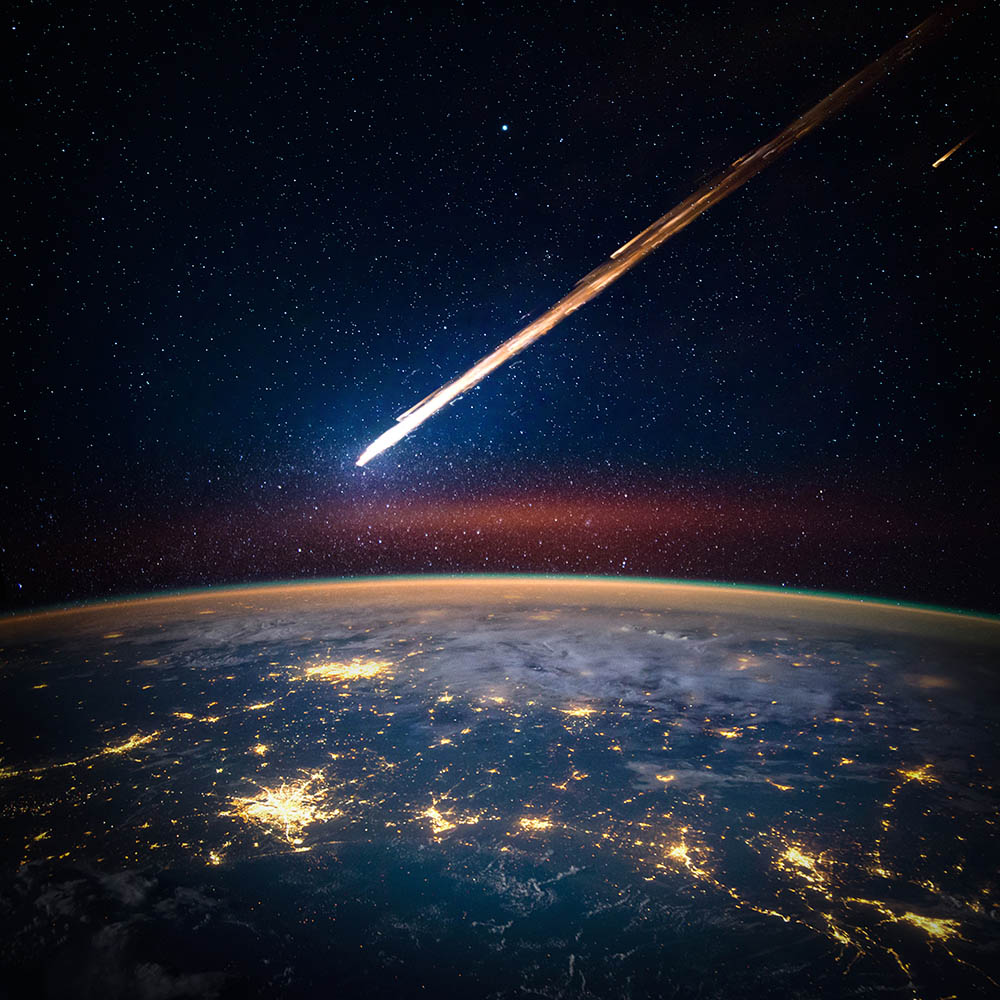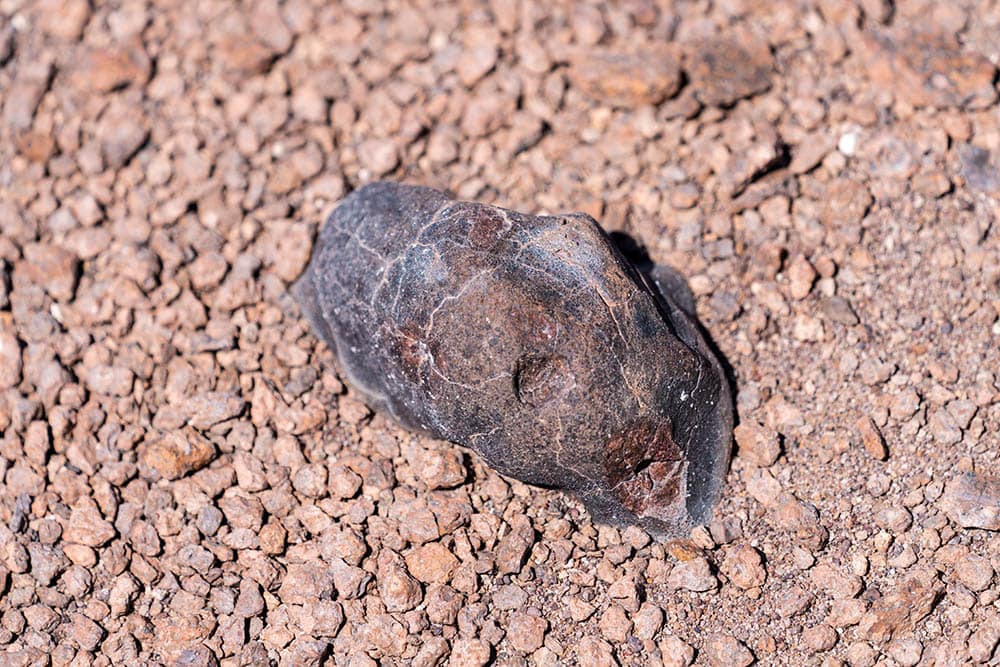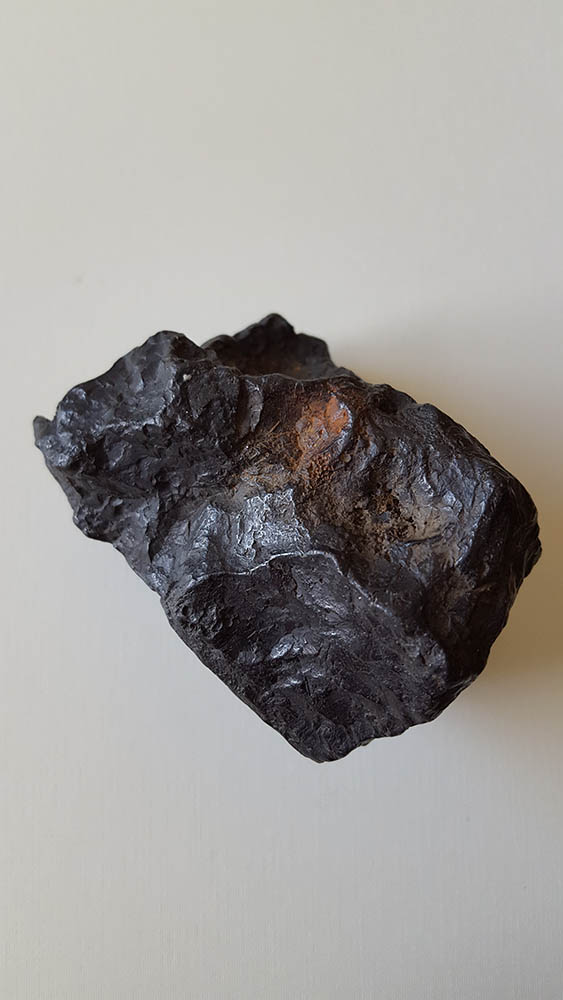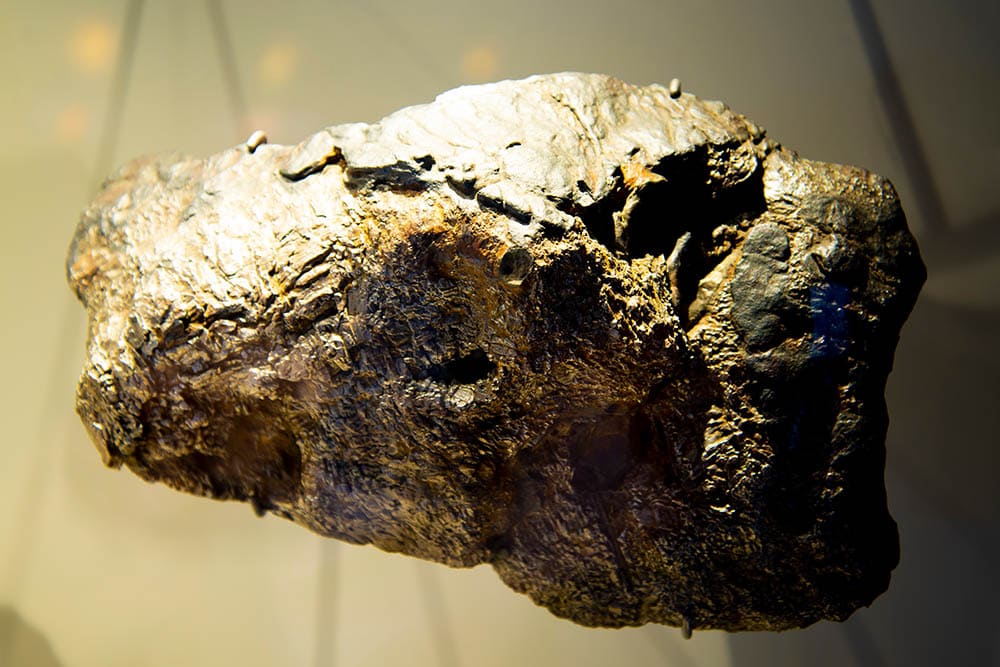Where Do Meteorites Come From? What You Need to Know!
Last Updated on

A common belief about meteorites is that they come from comets. But recent research, which studied several fireballs in the Solar System, tells something else.1 According to this, meteorites come from rocky asteroids instead of icy comets.
It was also found that meteorites with extended trajectories come from asteroids that clash with unusual elements. For years, the widely accepted view has been that meteorites are of several types, each originating from different bodies in the asteroid belt.
However, a professor, Birger Schmitz, and his team found that most meteorites traveling to the Earth belong to the same parent in the asteroid belt.
Astronomers have discovered more than 30,000 meteorites on the Earth’s surface. Yet, there is no strict evidence about the origin of these pieces of debris. So, let’s have a look at what we have at the moment.

What Are Meteorites?
Meteorites are primarily pieces of asteroids, which are leftover rocky bodies from the time of the Solar System formation. Asteroids stay in the asteroid belt between the outer gas and ice bodies and the inner planets.
Sometimes, they are pulled out of orbit, clash, or collide with Earth. The resulting “solid pieces of debris” are called meteorites.
Soon after the formation of meteorites, scientists took a keen interest in learning more about them. To know the origin of different meteorites, the researchers first learn the materials they’re made of.
Scientists and astronomers have discovered more than 30,000 meteorites on the Earth’s surface. However, the discovery was mostly made after these rocky objects fell or when they rested on the Earth’s surface after the event.

The Origin of Meteorites
The Lund University professor, Birger Schmitz, took a round of different parts of the globe, searching for meteorites’ origin. He called meteorites “millions or billions of years old dust” in the Solar System.
He traveled to California, China, Russia, and Sweden with the sole purpose of gathering 10,000 kilograms of cosmic sedimentary rock. This rock belonged to 15 different time zones of the meteorites’ past 500 million years of origin.
Instead of getting answers to his questions, Schmitz and his team became more confused. They had even more questions about the origin of all the space rocks and even the Earth.
According to Schmitz, the biggest problem in his study was that they couldn’t know the place in the asteroid belt that gave rise to the meteorites. For years, the popular belief was that meteorites are of several types, each originating from different elements in the asteroid belt. These dust bodies then travel to Earth. However, Schmitz and his team concluded that most meteorites that succeed in traveling to Earth might belong to the same element in the asteroid belt.
You can look at the findings of this study in the Proceedings of the National Academy of Sciences journal. Yet, many scientists are confused about the actual origin of meteorites and whether they originate from the same body or have different parents.

Origin of Meteorites Based on Their Types
Understanding the taxonomy of meteorites is essential to determining their origin. Primarily, the Solar System has three types of meteorites: stony, stony-iron, and iron.
All these meteorite categories usually have slight differences, but they all came from asteroids, not comets. So, let’s get to know more in detail.
Stony Meteorites or Chondrites

Chelyabinsk, the seventh-largest city in Russia, experienced a big explosion high in the sky not long ago. A big chunk of the explosive object burned in the atmosphere, but a few pieces reached the Earth.
One piece collided through the frozen Lake Chebarkul, making a seven-meter-wide hole in the lake. Some months forward, the diver recovered this piece in October 2013. It weighed around 570 kilograms. More fragments were also collected from different parts of the region.
Astronomers termed this explosion an asteroid clash. The rocky object was 17–20 meters across and had a mass of 10,000 tons. The exciting part is that the initial blast had an energy of about 500 kilotons of TNT, the number equivalent to 30 Hiroshima bombs.
The Chelyabinsk meteorite was a stony object, identified as chondrite as they consist of tiny particles of silicate called chondrules. However, the actual origin of chondrules is still unknown.
It’s usually believed that chondrules were balls of molten rock in the dust and gas clouds that formed the Solar System. About 86% of meteorites are considered chondrites. These objects are made primarily of rock and originated from the asteroid belt. Stony meteorites are the remnants of the material that made the Solar System.
Carbonaceous Chondrites

Carbonaceous chondrites are another type of stony meteorite. They consist of a high organic chemical content, including amino acids. Like chondrites, these meteorites are also assumed to be new pieces of the primordial material that formed the Solar System.
Achondrites
These are other types of stony meteorites that don’t contain chondrules. Approximately 85 of the total meteorites are classified as achondrites.
These meteorites are different from other stony ones because they are not remnants of primordial material. Instead, they seem to result from the initial period of planet formation when material accumulated to create protoplanets under the gravitational pull.
As protoplanets started to grow, they melted. This damaged the chondrules and pushed the heavy elements toward the center, which left a rocky mantle behind. This outer layer then became the source of achondrites.
Achondrites are the leftovers of those planets that failed to form.
Iron Meteoroids

A few achondrites may have different origins, such as Mars or Moon. About one in 20 meteorites are believed to come from the iron category. They are primarily made of heavy elements, such as nickel and iron, and leftovers from the time of planet building, which are the pieces of protoplanets’ metal-rich core.
These fragments of space metal assist us in knowing the core, mantle, and crust formation of our planet.
Stony-Iron Meteorites

These rocky bodies are a combination of stone and iron meteorites, constituting only 1% of the total number. Stony-iron meteorites come from the failed planets’ interior, near the line that separates the rocky outer layers from the iron core.
Do Meteorites Hit People?
Yes, meteorites rarely hit people. These rocky bodies can injure humans, but it has never resulted in death. The most well-known story of meteorites hitting the human population was in Alabama in November 1954.
A meteorite crashed on the roof of a 34-year-old woman named Ann Elizabeth Hodges. It bounced off the furniture and hit her, injuring her quite severely. However, Elizabeth recovered soon.
Another incident takes us to 1992 when a meteorite shower fell in Uganda. One meteorite from the shower hit a tree and went straight toward the head of a boy who remained unhurt.
How to Find Meteorites
It’s pretty challenging to find meteorites on your rooftop. However, they’re the easiest to see in barren places with clear landscapes, like Antarctica.
In case you get lucky to find a meteorite, know that it originated from a broken asteroid belonging 470 million years ago. The breakup of asteroids results in several chondrites coming toward the Earth. Most of these pieces are still in the Solar System, while some may be on the Earth’s surface.

Conclusion
Meteorites are small, rocky debris that primarily originates from asteroids. They are primarily divided into three categories: stony, stony-iron, and iron. Some scientists or astronomers believe that every meteorite group originates from different sources.
However, a study found that most meteorites traveling toward the Earth come from the same parent. These could be asteroids. Meteorites usually stay in the asteroid belt, but sometimes they travel toward the Earth.
So, contrary to popular belief, meteorites don’t come from icy objects called comets. Instead, they are rocky, stony, and metallic, which confirms that they are the product of the breakdown of asteroids.
Featured Image Credit: Triff, Shutterstock
About the Author Jeff Weishaupt
Jeff is a tech professional by day, writer, and amateur photographer by night. He's had the privilege of leading software teams for startups to the Fortune 100 over the past two decades. He currently works in the data privacy space. Jeff's amateur photography interests started in 2008 when he got his first DSLR camera, the Canon Rebel. Since then, he's taken tens of thousands of photos. His favorite handheld camera these days is his Google Pixel 6 XL. He loves taking photos of nature and his kids. In 2016, he bought his first drone, the Mavic Pro. Taking photos from the air is an amazing perspective, and he loves to take his drone while traveling.
Related Articles:
15 Crucial Facts About Ultraviolet Rays & the Sun
What Constellation Is Spica In? The Interesting Answer!
10 Interesting Leo Constellation Facts, Myths, and FAQs
15 Interesting Pegasus Constellation Facts, Myths, and FAQs
6 Interesting Sagittarius Constellation Facts, Myths, and FAQs in 2024!
What Are Constellations? Where Did They Come From?
8 Interesting Libra Constellation Facts, Myths, and FAQs
What Is Infrared Radiation? Science-Based Facts & FAQ
